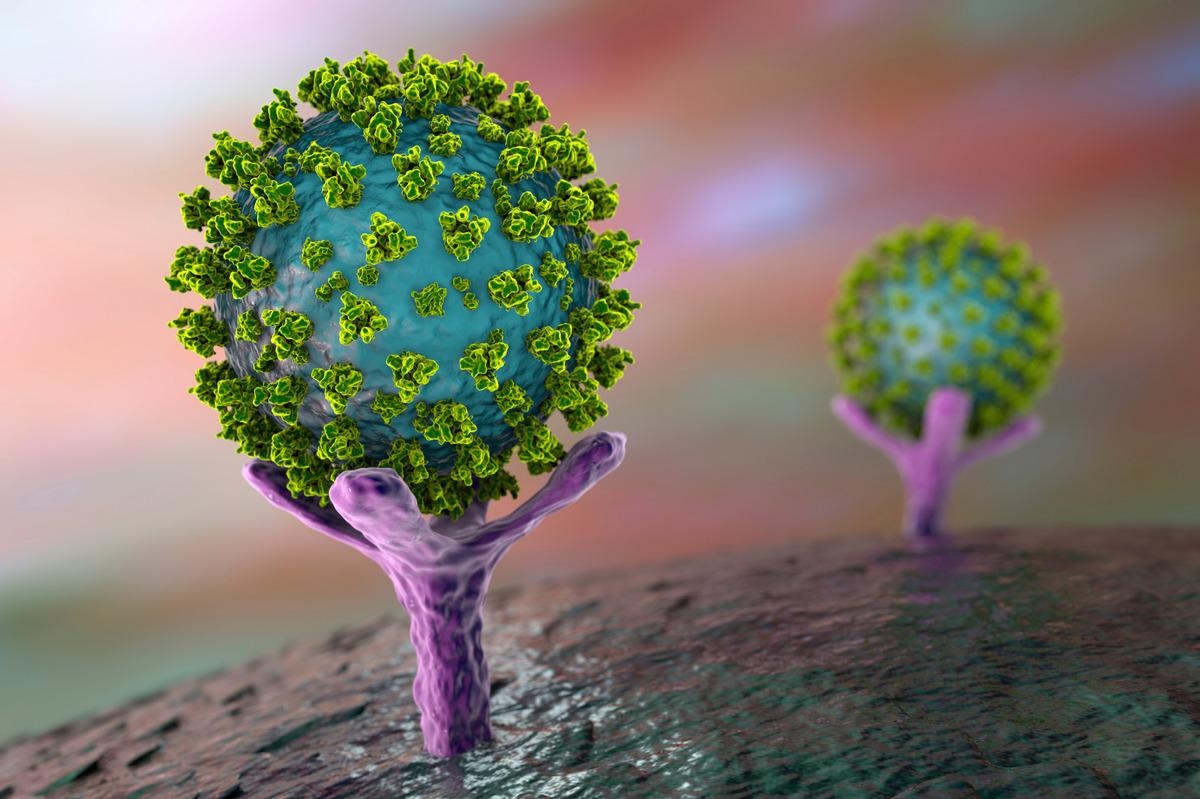Scientists have discovered a new generation of angiotensin receptor blockers that may be used to treat coronavirus disease 2019 (COVID-19).
In silico docking and molecular dynamics studies have shown that these drugs are capable of preventing the interaction between human angiotensin-converting enzyme 2 (ACE2) and the spike receptor-binding domain (RBD) of severe acute respiratory syndrome coronavirus 2 (SARS-C0V-2).
 Study: Discovery of a new generation of angiotensin receptor blocking drugs: receptor mechanisms and in silico binding to enzymes relevant to covid-19. Image Credit: Kateryna Kon/Shutterstock
Study: Discovery of a new generation of angiotensin receptor blocking drugs: receptor mechanisms and in silico binding to enzymes relevant to covid-19. Image Credit: Kateryna Kon/Shutterstock
The study has recently been published in the Computational and Structural Biotechnology Journal.
Background
According to the available literature, there is an association between the pathogenesis of cardiovascular disease and COVID-19. In severe COVID-19 patients with pneumonia, the development of hyperinflammation or “cytokine storm” is related to the overexpression of angiotensin II in the renin-angiotensin system. In this context, studies have shown that hypertensive COVID-19 patients who take angiotensin receptor blockers have lower morbidity and mortality than those without medication.
The cleavage of SARS-CoV-2 spike protein by furin and 3CLpro is required to initiate viral entry into host cells. The entire process is operated through the charge relay system. Tyrosinate in angiotensin II, serinate in furin, and cysteinate in 3CLpro are anions created through the charge relay systems. The activities of these residues are triggered through their nucleophile anions. The charge relay systems mediating the activity of furin and 3CLpro are similar to those that mediate the activity of angiotensin II.
In the current study, the scientists have identified a new generation of sartan-like angiotensin II receptor blockers that are known to inhibit the receptors more strongly than currently available sartans. Sartans are a group of type 1 angiotensin receptor antagonists that modulate the function of the renin-angiotensin system and are used to treat high blood pressure.
The new generation of angiotensin receptor blockers discovered in the study have been referred to as bisartans. These bisartans are novel bis-alkylated imidazole sartan derivatives bearing dual symmetric anionic biphenyl tetrazole moieties.
Important observations
The bisartans discovered in the study were categorized into two sub-types. In bisartans A and B, the aliphatic butyl group is attached at position 4 of the imidazole ring. In bisartans C and D, the butyl group is attached at position 2 of the imidazole ring.
In-silico docking experiments were conducted to determine whether these bisartans are able to interact with the components involved in the SARS-CoV-2 entry process, including ACE2, spike RBD, furin, and 3CLpro.
The findings revealed that the bisartans bind to the arginine residues present in the viral spike furin cleavage site. Specifically, bisartan A showed more robust binding to the mutated furin cleavage site of the SARS-CoV-2 delta variant than that to the wildtype cleavage site.
Further molecular docking experiments revealed that two negatively-charged tetrazoles of bisartan A bind to positively-charged arginine and histidine residues in the spike furin cleavage site. In addition, bisartans showed stable binding to the Zn2+ domain of the ACE2 catalytic site.
The number of arginine and histidine residues involved in the formation of bisartans-spike RBD-ACE2 complex was higher than that involved in the sartans-spike RBD-ACE2 complex. These observations indicate that bisartans have higher binding affinities for the ACE2-spike complex than currently available sartans.
Overall, these findings indicate that bisartans are capable of inhibiting the function of furin, and thus, can block the process of viral entry into host cells. Further experiments revealed that bisartans inhibit the interaction between viral spike and ACE2 without altering the physiological activity of ACE2 in reducing the angiotensin II level.
Despite having the ability to interfere with spike-ACE2 interaction as well as 3-CL protease, bisartans failed to inhibit SARS-CoV-2 infection in COVID-19 bioassays. This could be because of their poor cell membrane permeability. The presence of an equal number of positively- and negatively charged functional groups in bisartans might be responsible for their poor cell membrane permeability.
Study significance
The study identifies a new class of angiotensin II receptor blockers referred to as bisartans that contain two tetrazoles. Using two symmetrically arranged tetrazoles, bisartans are able to inhibit both type 1 angiotensin receptor and ACE2 enzyme via the interaction with their guanidino group and zinc atom, respectively.
Although bisartans fail to show high effectiveness in preventing viral infection, these drugs could play a potential role in preventing angiotensin II-induced pulmonary edema and angiotensin receptor-induced cytokine storm in severe COVID-19 patients.